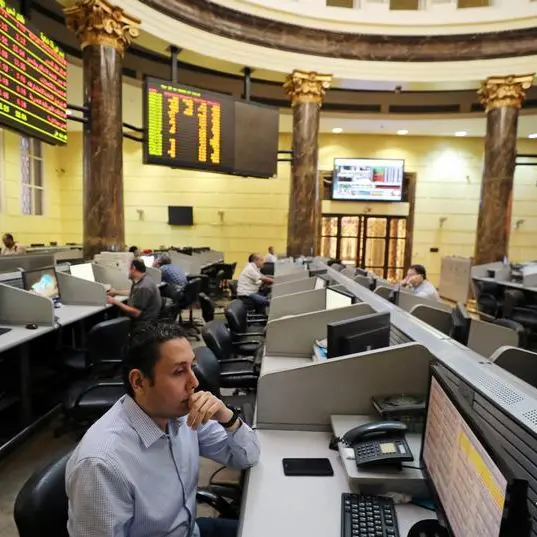PHOTO
SINGAPORE: U.S. oil prices tumbled on Wednesday, continuing Tuesday's slide after the International Energy Agency (IEA) cast doubts over the past few months' narrative of a tightening fuel market.
U.S. West Texas Intermediate (WTI) crude was at $55.10 per barrel, down 60 cents, or over 1 percent.
Brent crude futures were yet to trade.
Tuesday's and Wednesday's falls mean that Brent is now down by almost 5 percent since hitting 2015 highs a week ago, ending a more than 40-percent rise between July and early November.
"Crude oil prices fell sharply after the IEA raised doubts about the outlook for 2018," ANZ bank said on Wednesday.
The International Energy Agency (IEA) on Tuesday cut its oil demand growth forecast by 100,000 barrels per day (bpd) for this year and next, to an estimated 1.5 million bpd in 2017 and 1.3 million bpd in 2018.
"Using a scenario whereby current levels of OPEC production are maintained, the oil market faces a difficult challenge in 1Q18 with supply expected to exceed demand by 600,000 bpd followed by another, smaller, surplus of 200,000 bpd in 2Q18," the agency said.
The slowdown in demand growth could mean world oil consumption may not, as many expect, breach 100 million bpd next year, while supplies are likely to exceed that level.
The IEA report countered the Organization of the Petroleum Exporting Countries, which just a day earlier said 2018 would see a strong rise in oil demand.
Greg McKenna of futures brokerage AxiTrader said prices were dragged down as "current demand will fall and longer term the growth of U.S. oil production will eclipse anything we've seen before - including the Saudis and Russians".
U.S. oil production has already increased by more than 14 percent since mid-2016 to 9.62 million bpd. The latest government data is due on Wednesday.
Led by U.S. output, the IEA said non-OPEC production will add 1.4 million bpd of additional production in 2018.
Traders said the IEA's outlook would put pressure on producer club OPEC to keep restraining output in order to defend crude prices, which most its members rely on for revenue.
OPEC and some non-OPEC producers including Russia have been withholding crude production this year to end years of oversupply.
The deal is due to expire in March 2018, but OPEC will meet on Nov. 30 to discuss policy, and it is expected to agree an extension of the cuts.
(Reporting by Henning Gloystein; Editing by Joseph Radford) ((henning.gloystein@thomsonreuters.com; +65 6870 3263))
U.S. West Texas Intermediate (WTI) crude was at $55.10 per barrel, down 60 cents, or over 1 percent.
Brent crude futures were yet to trade.
Tuesday's and Wednesday's falls mean that Brent is now down by almost 5 percent since hitting 2015 highs a week ago, ending a more than 40-percent rise between July and early November.
"Crude oil prices fell sharply after the IEA raised doubts about the outlook for 2018," ANZ bank said on Wednesday.
The International Energy Agency (IEA) on Tuesday cut its oil demand growth forecast by 100,000 barrels per day (bpd) for this year and next, to an estimated 1.5 million bpd in 2017 and 1.3 million bpd in 2018.
"Using a scenario whereby current levels of OPEC production are maintained, the oil market faces a difficult challenge in 1Q18 with supply expected to exceed demand by 600,000 bpd followed by another, smaller, surplus of 200,000 bpd in 2Q18," the agency said.
The slowdown in demand growth could mean world oil consumption may not, as many expect, breach 100 million bpd next year, while supplies are likely to exceed that level.
The IEA report countered the Organization of the Petroleum Exporting Countries, which just a day earlier said 2018 would see a strong rise in oil demand.
Greg McKenna of futures brokerage AxiTrader said prices were dragged down as "current demand will fall and longer term the growth of U.S. oil production will eclipse anything we've seen before - including the Saudis and Russians".
U.S. oil production has already increased by more than 14 percent since mid-2016 to 9.62 million bpd. The latest government data is due on Wednesday.
Led by U.S. output, the IEA said non-OPEC production will add 1.4 million bpd of additional production in 2018.
Traders said the IEA's outlook would put pressure on producer club OPEC to keep restraining output in order to defend crude prices, which most its members rely on for revenue.
OPEC and some non-OPEC producers including Russia have been withholding crude production this year to end years of oversupply.
The deal is due to expire in March 2018, but OPEC will meet on Nov. 30 to discuss policy, and it is expected to agree an extension of the cuts.
(Reporting by Henning Gloystein; Editing by Joseph Radford) ((henning.gloystein@thomsonreuters.com; +65 6870 3263))












